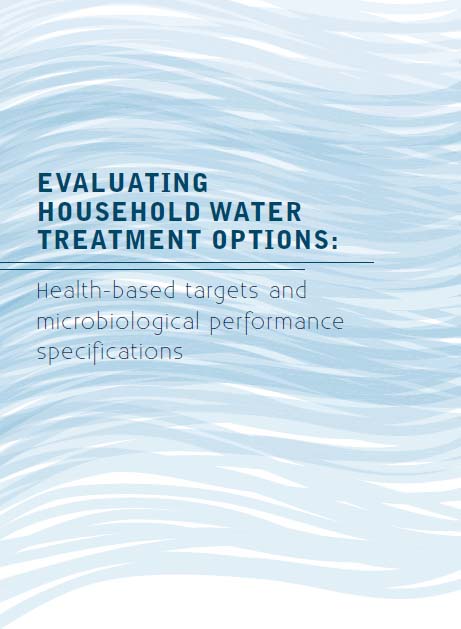 This document by the World Health Organisation, for the first time, sets forth global criteria to evaluate whether a household water treatment option reduces waterborne pathogens sufficiently to protect health. Through use of a risk-based framework and by emphasizing the philosophy of incremental improvement, it is intended to provide implementers and policy-makers with an evidence-based and pragmatic approach to select options suited to local conditions.
This document by the World Health Organisation, for the first time, sets forth global criteria to evaluate whether a household water treatment option reduces waterborne pathogens sufficiently to protect health. Through use of a risk-based framework and by emphasizing the philosophy of incremental improvement, it is intended to provide implementers and policy-makers with an evidence-based and pragmatic approach to select options suited to local conditions.
Household water treatment interventions may play an important role in protecting public health where existing water sources, including those delivered via a piped network or other improved sources, are untreated, are not treated properly or become contaminated during distribution or storage. Household water treatment applications are a range of technologies, devices or methods employed for the purposes of treating water at the household level or at the point of use in other settings, such as schools, health-care facilities and other community locations. Point-of-use water treatment is another term used for household water treatment.
Proper household storage, including use of closed or narrow-necked containers to prevent contact with contaminated hands, is an essential component of household water management, but is not the focus of this document. Properly formulated and locally relevent performance specifications are needed to protect users and inform decision-making regarding selection of technologies or approaches. This document provides a basis by which to evaluate the microbiological performance of household water treatment options by –
- Establishing a series of health based microbiological performance based targets, ranging from an interim target to highly protective, to encourage incremental improvements in water safety; and
- Providing guidance to inform the development of new household water treatment testing protocols or supplement existing protocols.
The document provides a range of technical recommendations, including:
- A step-by-step overview of how to evaluate household water treatment microbiological performance;
- Elaboration of health-based water quality targets ranging from interim to highly protective, including establishment of default targets for use in data-scarce settings;
- Description of technology-specific laboratory testing protocols and guiding principles; and
- Considerations relating to developing national technology evaluation programs.
It also describes additional factors, including (a) those pertaining to national-level technology evaluation or verification programmes, and (b) justification for use of quantitative microbial risk assessment (QMRA) and performance targets for three classes of pathogens.
This document is especially intended for resource-scarce settings where water quality laboratories may have limited capacity and incremental improvements of household water treatment performance could have a substantial, positive impact on public health. These microbiological performance targets and testing protocols are intended to inform implementers, protect users and encourage technology development by providing a risk-based framework to assess the performance of household water treatment interventions.
The document provides a basis to inform the development or revision of national or international technology performance evaluation programmes. It is underpinned by concepts established in the World Health Organisation Guidelines for Drinking Water Quality, and the laboratory methods described are meant to be relevant in resource-limited settings. This document does not describe targets or protocols for chemical contaminants, although many of the same concepts regarding risk-based performance targets are relevant to this group of contaminants. The intended audiences are (1) national-level certification organizations (2) regulatory authorities (3) those involved in developing and evaluating technologies, including universities and researchers, and (4) manufacturers and implementers of household water treatment technologies.
The recommendations made in this document are advisory in nature and may be adapted to local contexts by regulatory agencies or national authorities, where applicable, including for product certification, pre-intervention performance evaluation or technology development and selection.
Download the document here -





 Evaluating_household_water_treatment_options_World_Health_Organisation_2011.pdf
Evaluating_household_water_treatment_options_World_Health_Organisation_2011.pdf







